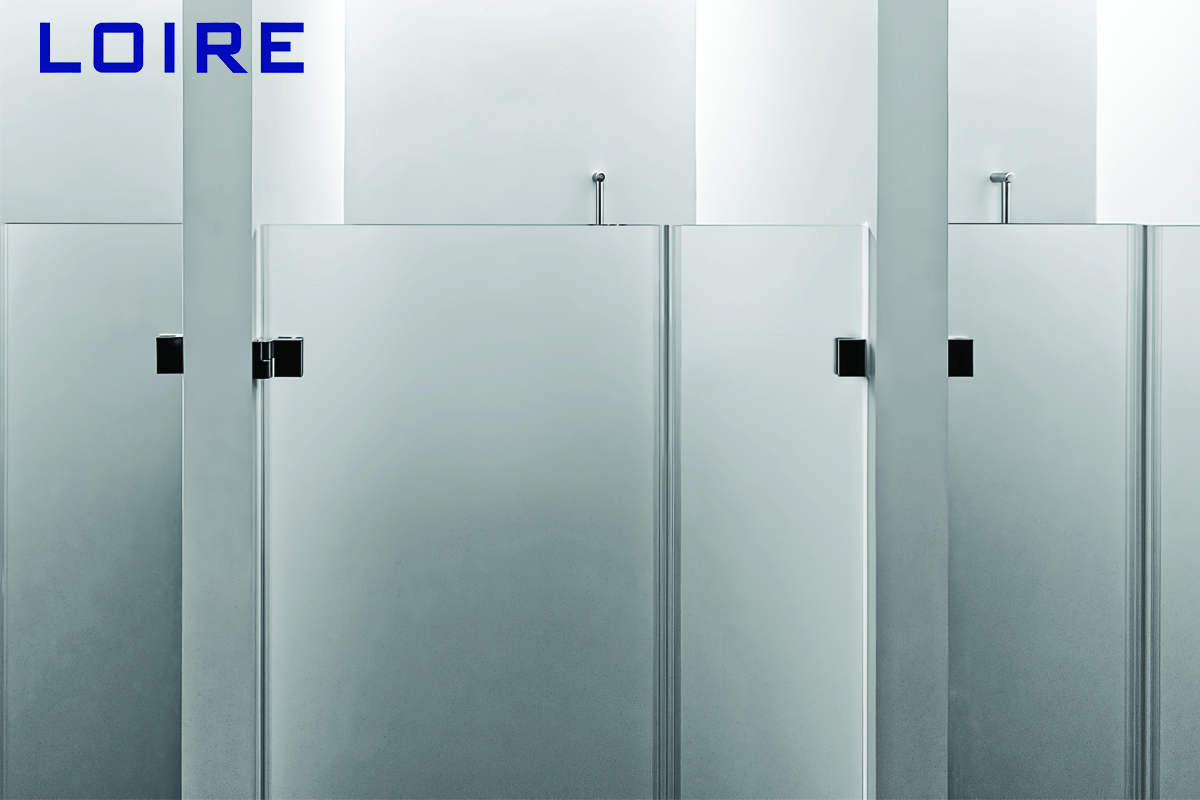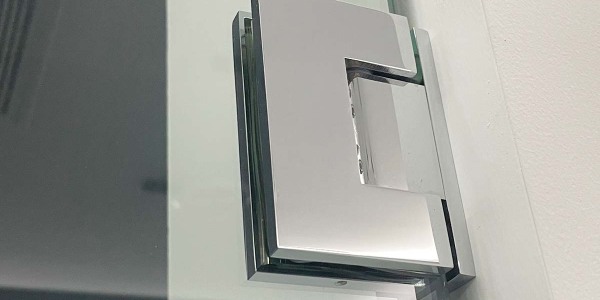How to choose the right shower door for your bathroom

Choosing the right shower door to suit your bathroom's layout and decoration might seem like a daunting task, but it can be simple if you just keep a few principles in mind. We'll show you how to get started and what to look for.
1.Where to Begin
Selecting a shower door is a matter of personal taste as well as fitting. When browsing options online or at the store, you'll need to think about the following sectors. The first thing is the size and layout of your shower or bathtub, you'll need precise measurements to ensure the door fits. The next thing is the look you want to achieve. The next thing is the amount of privacy you require. The last and the most important one is the budget you have. Also, when installing a shower door, it's a good idea to inspect your current showerhead and plumbing fixtures, and possibly consider replacing them.
2. Measuring for a Shower Door
Be sure to carefully measure the width and height of your shower or tub entrance before deciding on a new shower door. Experts recommend determining measurements within 1/16 of an inch. Measure from top to bottom and vertically in two different places to ensure the dimensions of the space are consistent. Although showers vary, here are some typical dimensions:
Standard shower-bathtub combination width = 60 inches
Large stand-alone shower width = 54 to 60 inches
Small stand-alone shower width = 42 to 48 inches
Most popular shower height = 70, 74 or 79 inches
3.Shower Door Styles
3.1 Sliding, Bypass and Barn-Door-Style Shower Doors
Consist of two or more panels that slide or roll on top-and/or bottom-mounted tracks. Suitable for wide openings, providing an average of 60 inches of entrance space. Great for smaller, narrow bathrooms, as these types of doors don't swing out. Best for tub-shower combinations as well as corner and alcove showers. It is suitable for bathrooms that are not particularly large but pursue the separation of dry and wet.
3.2 Hinged and Pivot Shower Doors
It can be mounted with single or double hinges to swing either inward or outward, like a traditional room door. And it can be mounted to the shower wall or to fixed panels. Suitable for narrower corners and alcove stand-alone showers. The area required for this shower door can be smaller than that of the previous shower door.
3.3 Neo-Angle and Curved Shower Enclosures
Intended exclusively for neo-angle or curved shower enclosures and bases. Best for stand-alone showers installed in a corner. Its door can be swung left or right.
3.4 Bathtub Doors
Shorter than standard shower doors and designed to fit shower-bathtub combinations. It has a sliding or bypass design and is available in framed or frameless options and in a variety of glass styles. This is suitable for bathrooms with bathtubs and wants to remove bathtub splash.
4. Shower Door Glass Options
Your choice of door glass mostly comes down to your bathroom's decoration and your preference, but there are a few differentiating factors.
Clear glass doors are a more modern, stylish option. Because they provide more visibility to the shower interior, they're the preferred choice for elaborately patterned tiled showers you want to show off, and they can open up the look of a smaller bathroom. Privacy typically isn't an issue with clear shower doors if your bathroom door locks. Frosted glass doors are treated with an opaque finish and offer the most privacy. These doors can be more difficult to clean as their pattern makes it harder to see dirt and grime. Patterned and finished glass doors are etched with a variety of patterns, such as a raindrop or rainfall pattern, to offer some privacy but are more translucent than frosted glass.
The above are some tips on the selection of bathroom glass doors. I hope they can help you see this article. All bathroom glass doors need corresponding shower door hardware to fix. You can take a look at Loire Hardware Factory, which provides hardware accessories for all kinds of shower glass doors.
More details for you: http://loirehardware.com
Choosing the right shower door to suit your bathroom's layout and decoration might seem like a daunting task, but it can be simple if you just keep a few principles in mind. We'll show you how to get started and what to look for.
4.1 Where to Begin
Selecting a shower door is a matter of personal taste as well as fitting. When browsing options online or at the store, you'll need to think about the following sectors. The first thing is the size and layout of your shower or bathtub, you'll need precise measurements to ensure the door fits. The next thing is the look you want to achieve. The next thing is the amount of privacy you require. The last and the most important one is the budget you have. Also, when installing a shower door, it's a good idea to inspect your current showerhead and plumbing fixtures, and possibly consider replacing them.
4.2 Measuring for a Shower Door
Be sure to carefully measure the width and height of your shower or tub entrance before deciding on a new shower door. Experts recommend determining measurements within 1/16 of an inch. Measure from top to bottom and vertically in two different places to ensure the dimensions of the space are consistent. Although showers vary, here are some typical dimensions:
Standard shower-bathtub combination width = 60 inches
Large stand-alone shower width = 54 to 60 inches
Small stand-alone shower width = 42 to 48 inches
Most popular shower height = 70, 74 or 79 inches
5. Shower Door Styles
5.1 Sliding, Bypass and Barn-Door-Style Shower Doors
Consist of two or more panels that slide or roll on top-and/or bottom-mounted tracks. Suitable for wide openings, providing an average of 60 inches of entrance space. Great for smaller, narrow bathrooms, as these types of doors don't swing out. Best for tub-shower combinations as well as corner and alcove showers. It is suitable for bathrooms that are not particularly large but pursue the separation of dry and wet.
5.2 Hinged and Pivot Shower Doors
It can be mounted with single or double hinges to swing either inward or outward, like a traditional room door. And it can be mounted to the shower wall or to fixed panels. Suitable for narrower corners and alcove stand-alone showers. The area required for this shower door can be smaller than that of the previous shower door.
5.3 Neo-Angle and Curved Shower Enclosures
5.4 Bathtub Doors
Shorter than standard shower doors and designed to fit shower-bathtub combinations. It has a sliding or bypass design and is available in framed or frameless options and in a variety of glass styles. This is suitable for bathrooms with bathtubs and wants to remove bathtub splash.
5. Shower Door Glass Options
Your choice of door glass mostly comes down to your bathroom's decoration and your preference, but there are a few differentiating factors.
Clear glass doors are a more modern, stylish option. Because they provide more visibility to the shower interior, they're the preferred choice for elaborately patterned tiled showers you want to show off, and they can open up the look of a smaller bathroom. Privacy typically isn't an issue with clear shower doors if your bathroom door locks. Frosted glass doors are treated with an opaque finish and offer the most privacy. These doors can be more difficult to clean as their pattern makes it harder to see dirt and grime. Patterned and finished glass doors are etched with a variety of patterns, such as a raindrop or rainfall pattern, to offer some privacy but are more translucent than frosted glass.
The above are some tips on the selection of bathroom glass doors. I hope they can help you see this article. All bathroom glass doors need corresponding shower door hardware to fix. You can take a look at Loire Hardware Factory, which provides hardware accessories for all kinds of shower glass doors.
More details for you: http://loirehardware.com






